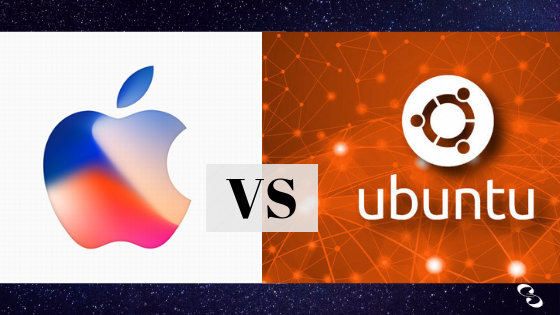

- #UBUNTU MAC OS EMULATOR INSTALL#
- #UBUNTU MAC OS EMULATOR DRIVERS#
- #UBUNTU MAC OS EMULATOR WINDOWS 10#
- #UBUNTU MAC OS EMULATOR ISO#
I added a 25GB partition for Ubunutu Linux and used the remaining 250GB for a shared NTFS Data partition (all 3 OS will use it to store Documents, Source Code, Java Applications, Music, Movies). Don’t worry, although we already have 4 partitions, it’s a GPT partitioned disk (hopefully) which doesn’t have the limitation of 4 primary disks like a MBR disk. As it’s so convenient, you can use the Windows tool to create the remaining partitions.I chose a value so the final size of the windows partition is 100GB. Now, enter the amount of MB to shrink the Windows Partition. Start the Windows partition manager (right click on your computer -> manage -> disk management -> right click on C: -> Shrink Volume.If you do, you might not be able to shrink the Windows partition sufficiently, and you’ll have to start over. Once it’s (almost) finished and logs you in to the desktop, don’t do anything else yet! Keep the automatically started BootCamp installer open but don’t proceed yet.
#UBUNTU MAC OS EMULATOR INSTALL#
#UBUNTU MAC OS EMULATOR ISO#

You can check with csrutil status if it’s enabled or not. Type reboot to reboot into standard OSX.To disable the integrity protection, enter csrutil disable.Once loaded, in the top menu select Utilities->Terminal.Reboot your Mac and at the boot chime, press cmd-r to boot into the recovery image.To make necessary changes to system files, you must disable the integrity checks of El Capitan Do not follow it unless you know what you are doing and most of all: create a backup first ! I will not take any responsibility for loss of data or wrecked OS installations (incl. NOTE: The following procedure is not without risk. optional: Install & Configure VirtualBox to boot Windows/Linux from Raw disk in OSX.Install ntfs-3g in OSX and Linux to access the shared data partition.Fix the Windows boot process (error 0xc000000e).Please let me know if it worked or where you got stuck to make it more complete. To save you that time, I decided to write this guide. I’ve tried many things that in the end didn’t work out. I spent literally 2.5 days (that’s 36 hours) on the internet, and trying and testing to remedy all the quirks and problems. Another advantage might be to use Docker natively in Linux instead of a VM. Windows and OSX do too much soft scrolling and cause a growing lag between real output and display. scrolling of console output in Eclipse is only usable under Linux. But there are some use cases where you need to be able to boot natively into an OS - and it’s not just gaming in Windows, e.g. And what if you’d like to not just install a dual boot but triple or quadruple boot? Of course, you might overcome most challenges by simply using a virtual machine in VirtualBox, Parallels or VMWare Fusion.

#UBUNTU MAC OS EMULATOR DRIVERS#
What if you want to share data between the two operating systems, for instance? Windows can’t access Mac’s HFS+ file system and Apple’s implementation of NTFS drivers to access Windows file systems is so buggy, they only dare to give you read access. But BootCamp doesn’t give you enough flexibility. Once finished, you can select which OS to boot by pressing “alt” when the boot chime sounds. It will ask you how much space you want to allocate for each environment, ask you for a Windows 8 or 10 ISO or CD-ROM, and then start the process.
#UBUNTU MAC OS EMULATOR WINDOWS 10#
Installing Windows 10 alongside with Mac OS is pretty straightforward with Apple’s BootCamp.


 0 kommentar(er)
0 kommentar(er)
